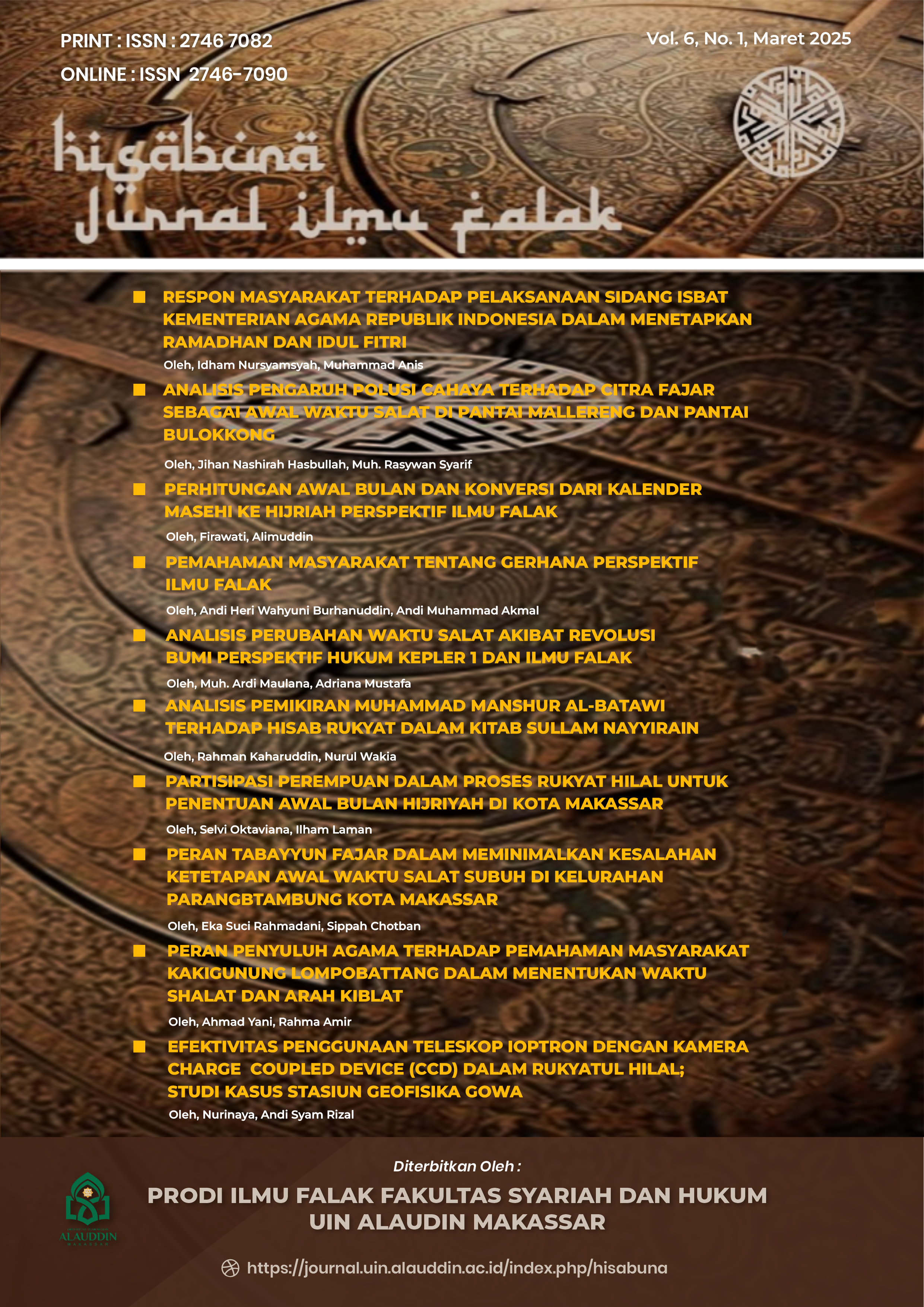EFEKTIVITAS PENGGUNAAN TELESKOP IOPTRON DENGAN KAMERA CHARGE COUPLED DEVICE (CCD) DALAM RUKYATUL HILAL; STUDI KASUS STASIUN GEOFISIKA GOWA
Abstract
Observation of the crescent moon is a crucial method in determining the beginning of the Hijri month. Along with the development of technology, the use of modern optical aids such as ioptron telescopes and CCD cameras has become a promising alternative to improve observation accuracy. The main problem in this study is how effective the use of ioptron telescopes and CCD cameras is in rukyatul hilal. The main problem is then formulated into several sub-problems or research questions, namely: what are the results of using ioptron telescopes with CCD cameras in rukyatul hilal, and what is the success rate of using ioptron telescopes and CCD cameras in rukyatul hilal. This study aims to examine and analyze the effectiveness of using modern technology in rukyatul hilal. This type of research is a type of field research while the nature of the data collected is quantitative descriptive with the research approaches used are: theological normative sharia, and astronomy. The data sources in this study are based on the results of observations and documentation analysis supported by document studies. Data processing and analysis techniques are carried out through three stages, namely: data collection, data processing, and data presentation. The results of the study show that first, the results of observations using a telescope combined with a CCD camera are able to record crescent images quite well in favorable weather conditions. Second, the use of telescopes and CCD cameras in rukyatul hilal quantitatively is relatively low, namely 21.4% of 28 observations that meet the criteria with a total of 41 observations from 2021 to 2024. The implications of this study are: 1) It is necessary to develop a more comprehensive crescent observation methodology. 2) An evaluation of the effectiveness of optical instruments in rukyatul hilal is needed.
Copyright (c) 2025 Nurinaya, Andi Syam Rizal

This work is licensed under a Creative Commons Attribution-NonCommercial 4.0 International License.


